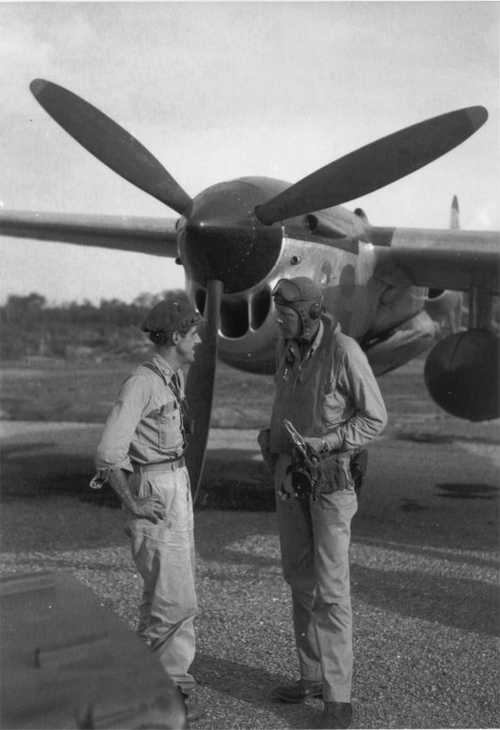
US Army Air Force
Charles Lindbergh with Maj. Thomas McGuire
Famed aviator Charles A. Lindbergh (right) with Maj. Thomas McGuire (left)during the summer of 1944, Lindbergh visited the Southwest Pacific Theater and helped develop economical flight techniques to extend the range of P-38 fighters. Lindbergh was interested in finding out how other types of fighters functioned and so he obtained clearance to do some observing with the Army Air Corps in New Guinea. There he got acquainted with the Lockheed P-38 and again soon found himself accepted as just another Technical Representative, who also was a top pilot. With the Air Corps, he found another way to be useful. After one of his first missions in New Guinea, mechanics checking planes discovered that Lindbergh had more fuel left than the pilot of any other ship in the squadron. This happened regularly. When this information sifted up through to the high command, Lindbergh moved, at General MacArthur’s request, from group to group instructing in fuel conservation and illustrating his lectures by flying with the squadrons. His work was credited with lengthening the range and tremendously increasing the usefulness of the P-38 for long-range bombing escorts. His efforts enabled P-38 fighters to shoot down a Japanese bomber that was carrying Admiral Yamamoto, the architect of the attack on Pearl Harbor. Altogether he spent six months in the Pacific, made fifty combat missions, put in 178 combat hours, and returned to Connecticut with complete reports on fighter planes, their performance, and their problems.
3106 Views
12/31/2012
